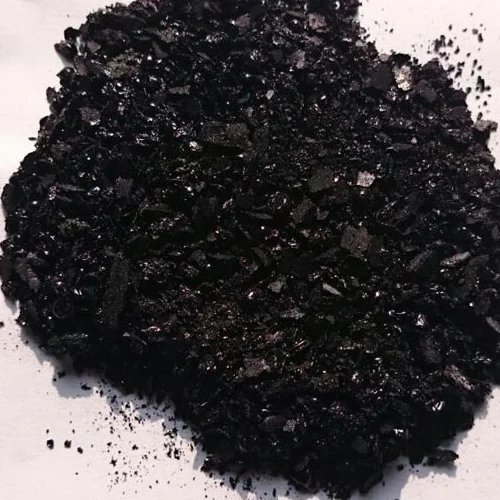Indigo Dye Exporters Exploring Innovations and Global Market Trends
The Growing Demand for Indigo Dye Exports
Indigo dye has a rich history that dates back thousands of years, often celebrated for its deep blue hue and versatility in various textiles. With the resurgence of interest in sustainable and natural dyes in recent years, indigo has emerged as a prominent player in the global dye market. This article explores the significance of indigo dye exporters, the factors influencing the market, and the sustainability aspect associated with this traditional dye.
Historical Significance
Indigo dye was once a highly sought-after commodity, used in textiles across many cultures, from ancient Egypt to the vibrant textiles of West Africa and the iconic denim of the American West. Traditionally derived from the indigofera plant, the dyeing process involves fermentation, which enhances the dye's richness and depth. This labor-intensive process was valued not just for the color it imparted but also for the cultural heritage it represented.
The Modern Indigo Market
Today, the market for indigo dye exports is experiencing significant growth, with numerous countries recognizing its economic potential. Major exporters include India, China, and several African nations where indigo farming remains a traditional occupation. The global trend towards sustainable fashion and eco-friendly textiles has considerably boosted the demand for natural indigo over synthetic alternatives.
One of the key drivers of the indigo export market is the growing awareness of the environmental impact associated with synthetic dyes. Many synthetic dyes are derived from petroleum, and their production often involves harmful chemicals that can pollute waterways and create toxic waste. In contrast, natural indigo is biodegradable and is often produced using organic farming practices, appealing to eco-conscious consumers and brands.
Export Challenges and Opportunities
dye for indigo exporter

While the demand for indigo dye is on the rise, exporters face several challenges. The production of indigo requires specific climate conditions and a skilled labor force, which can limit scalability. Additionally, fluctuations in market prices and demand can affect profitability for small-scale farmers and producers.
However, these challenges also present opportunities. Many indigo dye exporters are exploring innovative practices, such as organic certification, fair-trade practices, and direct-to-consumer sales channels. These strategies not only enhance the value of the product but also foster community development and socioeconomic growth in producing regions.
The Future of Indigo Dye Exports
As the fashion industry increasingly shifts towards sustainability, the future of indigo dye exports looks promising. Brands are actively seeking partnerships with producers of natural dyes, fostering collaborations that promote ethical sourcing and transparency in the supply chain. In addition, the advent of digital marketing and e-commerce platforms has made it easier for indigo exporters to reach global markets directly.
Moreover, as consumers become more knowledgeable about the origins of their products, there is a growing demand for authentic stories behind the dyes. This trend encourages exporters to highlight the artisanal aspects of indigo production, showcasing the traditional techniques and cultural significance embedded in this ancient craft.
Conclusion
Indigo dye exporters play a vital role in the intersection of tradition, sustainability, and modern commerce. As demand for natural dyes continues to grow, the prospects for indigo as a leading export product are bright. Emphasizing sustainable practices and fair trade will not only help preserve the art of indigo dyeing but also contribute to the well-being of communities and ecosystems involved in its production. The journey of indigo from plant to fabric is one that is intertwined with history, culture, and a sustainable future.
-
The Timeless Art of Denim Indigo Dye
NewsJul.01,2025
-
The Rise of Sulfur Dyed Denim
NewsJul.01,2025
-
The Rich Revival of the Best Indigo Dye
NewsJul.01,2025
-
The Enduring Strength of Sulphur Black
NewsJul.01,2025
-
The Ancient Art of Chinese Indigo Dye
NewsJul.01,2025
-
Industry Power of Indigo
NewsJul.01,2025
-
Black Sulfur is Leading the Next Wave
NewsJul.01,2025

Sulphur Black
1.Name: sulphur black; Sulfur Black; Sulphur Black 1;
2.Structure formula:
3.Molecule formula: C6H4N2O5
4.CAS No.: 1326-82-5
5.HS code: 32041911
6.Product specification:Appearance:black phosphorus flakes; black liquid

Bromo Indigo; Vat Bromo-Indigo; C.I.Vat Blue 5
1.Name: Bromo indigo; Vat bromo-indigo; C.I.Vat blue 5;
2.Structure formula:
3.Molecule formula: C16H6Br4N2O2
4.CAS No.: 2475-31-2
5.HS code: 3204151000 6.Major usage and instruction: Be mainly used to dye cotton fabrics.

Indigo Blue Vat Blue
1.Name: indigo blue,vat blue 1,
2.Structure formula:
3.Molecule formula: C16H10N2O2
4.. CAS No.: 482-89-3
5.Molecule weight: 262.62
6.HS code: 3204151000
7.Major usage and instruction: Be mainly used to dye cotton fabrics.

